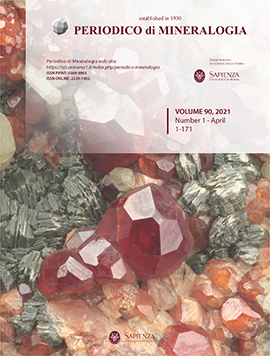Geochronology, geochemistry, and petrogenesis of the Dongshadegai K-feldspar granite in the northern margin of the North China Craton, China: Implications for Indosinian magmatism and related Au mineralization
DOI:
https://doi.org/10.13133/2239-1002/17147Keywords:
Indosinian period, K-feldspar granite, zircon U-Pb, Au (Mo) mineralization, geochemistryAbstract
As representative examples of alkaline magmatism and related mineralization in the northern margin of the North China Craton, the gold deposits within the Hadamengou Au-enriched region are dominated by K-feldspar-quartz vein-type gold mineralization. In contrast, the Dongshadegai pluton in the northern part of this region mainly consists of K-feldspar granite. In this study, we determined the U-Pb zircon age of the Dongshadegai pluton to be 235±3 Ma (MSWD = 2.1), indicating that this pluton was produced by middle Indosinian magmatism. The lithogeochemical properties of the Dongshadegai pluton are characterized by a high silica contents (SiO2, 70.4−72.5%); K enrichment (K2O/Na2O, 1.12−1.25); alkaline enrichment (K2O+Na2O, 8.95−9.52%); weakly peraluminous properties (Al2O3, 13.83−14.8%); light rare earth element enrichment (LREE/HREE, 18.04−21.65); weakly negative Eu anomalies (δEu, 0.61−0.76); Nb, Ta, P, Ti, and Sr depletions; and K, La, Ce, and Hf enrichments. Thus, the overall lithogeochemistry of the Dongshadegai pluton resembles that of A-type granite, indicating that the pluton originated from an alkaline-enriched magma. According to the regional tectonic evolutionary history and the geochemical properties of the pluton, we conclude that the Dongshadegai pluton formed in an extensional fault setting after a tectonic collision, and its corresponding age is consistent with the formation times of both the Hadamengou gold deposits and the Xishadegai Mo deposits. Based on a comprehensive analysis of the results of recent studies of regional tectonic magmatism and metallogenic processes, we show that a large-scale Au-Mo mineralization event occurred that was related to Indosinian tectonic magmatism on the northern margin of the North China Craton, which requires special attention because it differs from regional Late Mesozoic mineralization processes.


